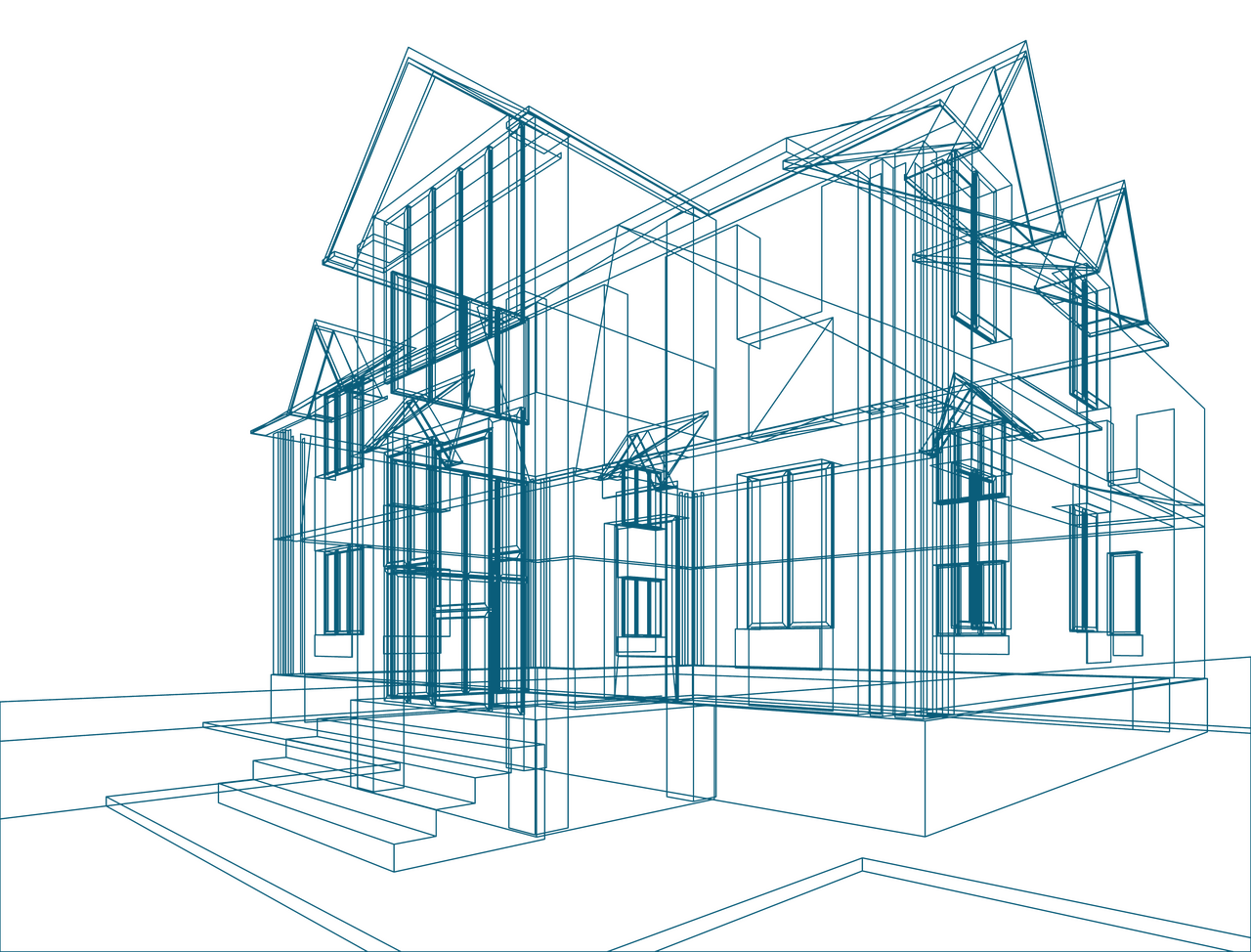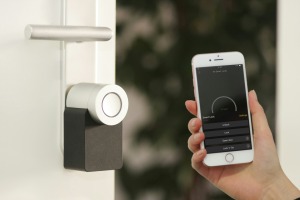


News I published 22 March 2022
Company size matters for installers’ purchasing behaviour
Knowing where electrical installers buy their installation products is essential for manufacturers and brands active in the installation market. Attention to detail is vital here, as became clear in a previous article in which we discussed installers’ usage of pure online shops. We saw that even though the pure online purchase channel is used by many installers, they do not actually spend much of their budget there.
But what about the other purchase channels? Where do installers spend most of their budget on installation products? And what factors influence their purchasing behaviour? For the Q4 2021 report of USP Marketing Consultancy’s European Electrical Installation Monitor, we asked 825 electrical installers from seven countries about their purchasing behaviour.
Of all the purchase channels used by European electrical installers, the traditional specialised wholesalers are the clear winners. Almost every installer buys installation products at specialised wholesalers and they spend a whopping three quarters of their budget there on average. This is the case in all countries in the scope of this research, with one exception. In Germany, ‘only’ 83% of installers use traditional specialised wholesalers, where they spend ‘only’ 64% of their budget, making the specialised wholesalers the winners still.
After the specialised wholesale purchase channel come the manufacturers, where almost half of installers purchase installation products directly, but where only 9% of installers’ budget is spent.
The rest of the purchase channels show an image similar to the pure online shops we discussed earlier. They are used by a fair share of installers, but only a tiny fraction of their budget is spent there.
Company size matters though
Looking at the share of wallet installers spend at certain purchase channels, the division in most countries is pretty similar to the above average. A major part of budget is spent at traditional specialised wholesalers, a minor part purchasing directly from manufacturers, and only fractions are spent at the other purchase channels. However, when we compare companies of different sizes instead of from different countries, more interesting differences appear.
Large installation companies tend to purchase directly at manufacturers more often than the smaller installation companies, for instance. When focusing on smaller installation companies on the other hand, a significantly larger than average share of wallet is spent at DIY stores, which installers find convenient for small purchases such as consumables or spare parts.
As we mentioned at the beginning of this article, for a sales strategy based on purchase behaviour of electrical installers to be successful, attention to detail is vital. The above shows that the value of purchase channels for brands and manufacturers of installation products can differ per area and can depend on the size of the installation companies. In the Q4 2021 report of USP Marketing Consultancy’s European Electrical Installation Monitor, we give a full overview of electrical installers’ usage of, spending at and experience with a variety of purchase channels in seven major European markets.

Read more


16 October 2024 I Henri Busker
The Building Blocks of Prefab: Key Materials


11 October 2024 I Dirk Hoogenboom
Rethinking European Construction: Prefab Trends


24 September 2024 I Jeroen de Gruijl
Blockchain, AI, AR and IoT – Architects’ Outlook


24 September 2024 I Dirk Hoogenboom
Future Developments in Construction Still Far Away

Fresh Insights Await
Our latest reports
Delve into the newest findings across various market segments, crafted for a cutting-edge overview. Explore our latest reports, brimming with up-to-date data, trend analyses, and in-depth examinations, all tailored to provide you with a comprehensive understanding of the current market dynamics.
Construction
Home Improvement
Installation
Special reports
Construction
Prefab H1 2024
2024 63 pages
Discover the adoption rate and benefits of prefabrication technology among European contractors in H1 2024. Understand the driving forces behind prefab usage and its impact on project efficiency and cost-saving.
6,300 Euro
Construction
Sustainability 2024
2024 72 pages
Painter Insight Monitor 2024 will focus on understanding the specific needs, preferences, and challenges faced by painters when it comes to sustainable products.
10,815 Euro
Construction
Importance of branding & branding funnels 2024
2024 62 pages
This report offers a comprehensive overview of importance of branding and branding funnels with a specific focus on European handymen. Brand behaviour is covered for each country, showing purchasing power, differences regarding quality, sustainability, online shopping, innovation-habit and private labels,
8,400 Euro
Construction
Future of construction Q2 2024
2024 82 pages
Explore the evolving future in construction sector among European architects in Q2 2024. Delve into the factors driving material preferences and the impact on construction aesthetics and sustainability.
1,850 Euro
Construction
Trends in material usage Q1 2024
2024 102 pages
Explore the evolving trends in material usage among European architects in Q1 2024. Delve into the factors driving material preferences and the impact on construction aesthetics and sustainability.
1,850 Euro
Construction
Media orientation H2 2021
2024 161 pages
Explore the media engagement patterns of contractors to optimize your marketing strategies. Dive into a pool of insights that unveils how contractors interact with different media channels.
6,300 Euro
Home Improvement
Purchase channels Q2 2024
2024 90 pages
The European Home Improvement Monitor offers valuable insights on purchase channels in the European home improvement industry, examining the evolving preferences and behaviors of consumers across traditional retail and emerging online platforms.
3,150 Euro
Home Improvement
Sustainability Q1 2024
2024 81 pages
Delve into sustainability trends in the home improvement sector in Q1 2024. Discover consumer preferences and the shift towards eco-friendly home improvement solutions.
3,150 Euro
Home Improvement
DIY versus DIFM Q4 2021
2024 113 pages
This report is a must-have if you’re in the home improvement industry. It provides a wealth of information on the behaviour of DIY and DIFM consumers, their motivations, and the factors that influence their purchasing decisions.
3,150 Euro
Home Improvement
DIY or DIFM Q4 2023
2024 70
Explore the prevailing trends between DIY and DIFM in Q4 2023. Understand consumer preferences and the factors influencing their choice between DIY and DIFM.
3,150 Euro
Home Improvement
Branding Q3 2023
2023 93 pages
This report offers an extensive overview of the home improvement industry, with a focus on branding and the most popular brands within different categories. Within this report, you will gain insights into how customers perceive home improvement brands and what motivates them to buy certain products.
3,150 Euro
Home Improvement
Purchase channels Q2 2023
2023 114 pages
The European Home Improvement Monitor offers valuable insights on purchase channels in the European home improvement industry, examining the evolving preferences and behaviors of consumers across traditional retail and emerging online platforms.
3,150 Euros
Installation
Smart & Connected Products Q2 2024
2024 120 pages
This report provides a comprehensive view of the attitudes of installers toward smart building solutions, specifically among electrical installers and their clients. In the report, you will find insights into the installers' experiences with installing smart products and the willingness of end users to invest in such solutions, as well as their motivations and pain points.
3,150 Euro
Installation
Smart and connected products Q2 2024
2024 129
This report provides a comprehensive view of the attitudes of installers toward smart building solutions, specifically among HVAC installers, plumbers and their clients. In the report, you will find insights into the installers' experiences with installing smart products and the willingness of end users to invest in such solutions, as well as their motivations and pain points.
3,150 Euro
Installation
BIM Q1 2024
2024 84 pages
The European Mechanical Installation Monitor report provides a detailed analysis of the plumbing and HVAC industry. This report specifically focuses on BIM adaptation in the industry.
2,650 Euro
Installation
Sustainability Q1 2024
2024 99 pages
The European Electrical Installation Monitor report provides a detailed analysis of the sustainable solutions in the installation industry. This report specifically focuses on sustainability aspects in the industry.
3,150 Euro
Installation
Challenges toward sustainable future Q4 2021
2024 111 pages
2,650 Euro
Installation
Purchase channels Q4 2021
2024 106 pages
Delve into the training needs within the electrical installation sector. Understand the areas requiring skill development to meet the evolving demands of the industry.
3,150 Euro
Special reports
European Sustainability Report 2024
2024 51 pages
This report provides in-depth insights based on triangulation of key market information and data as well as data from USP Marketing Consultancy’s key monitors that are carried out year in, year out. The focus of this report is on the most important stakeholders within the construction industry, namely architects, contractors, electrical and HVAC installers within The United Kingdom, The Netherlands, Belgium, Germany, Poland, France, Italy, and Spain.
3,950 Euro








